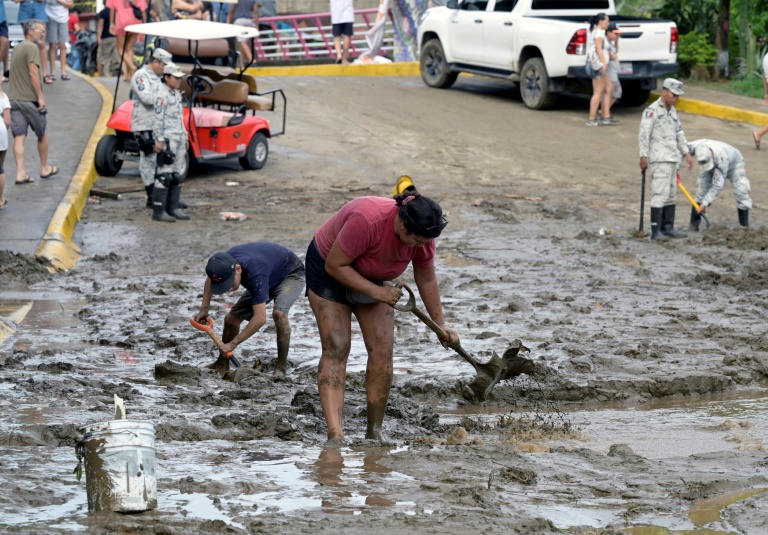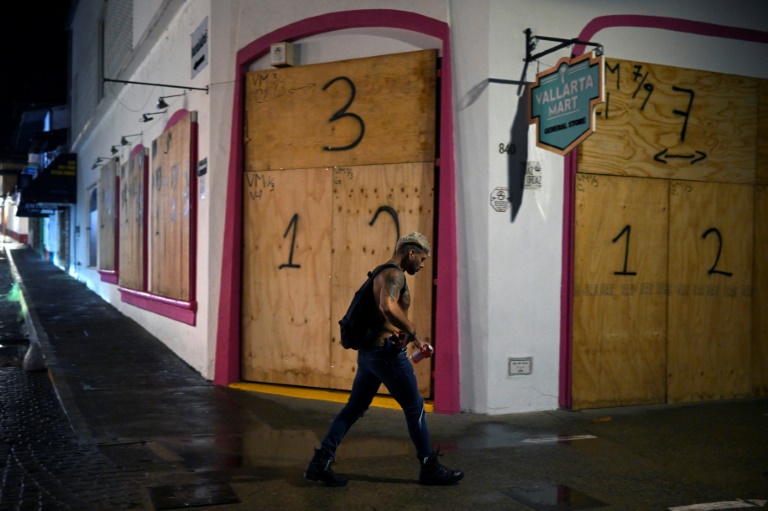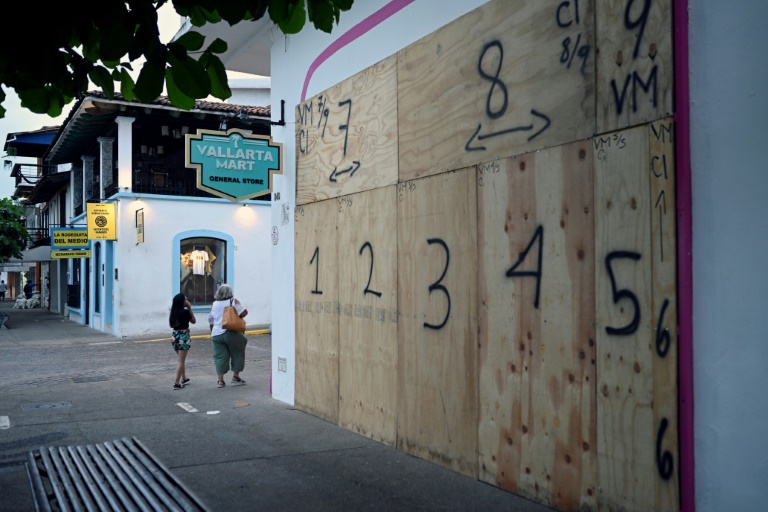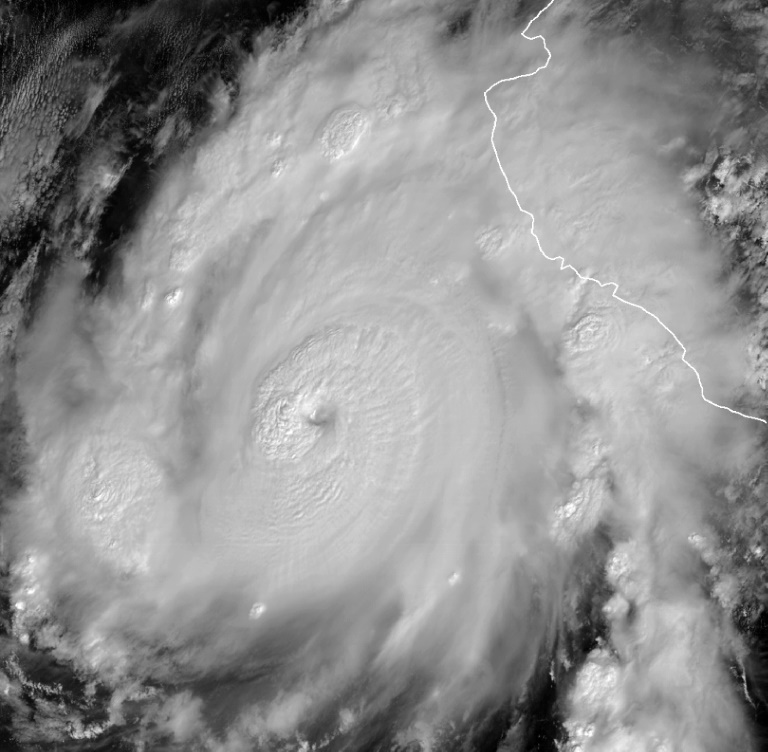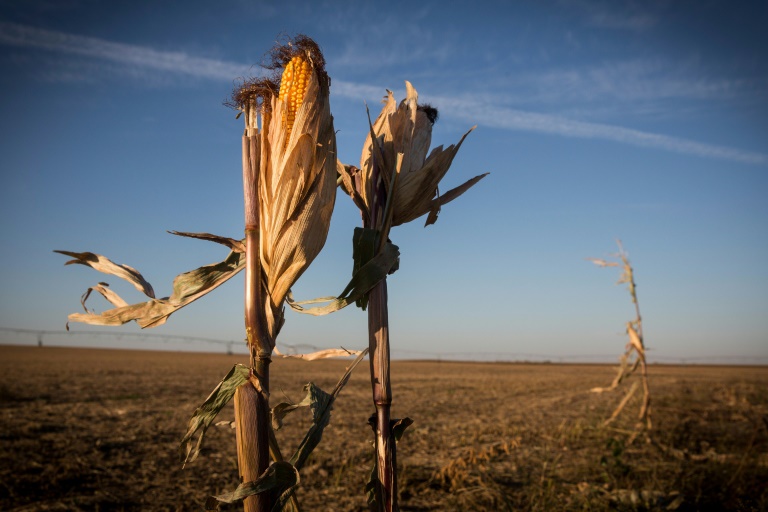Roslyn weakens to tropical storm after Mexico landfall
Residents and National Guard members clean the streets after the arrival of Hurricane Roslyn in Nayarit State, Mexico, on October 23, 2022
Hurricane Roslyn weakened rapidly Sunday after making landfall on Mexico’s Pacific coast, nonetheless leaving damage from high winds, landslides and flooding.
No deaths have been tallied so far but there were widespread reports of damage amid fears that still-rising rivers could lead to more flooding.
The storm was some 55 miles (90 kilometers) south-southeast of Durango, capital city of the state of the same name, with maximum sustained winds of 70 miles per hour, the NHC said in its 1800 GMT update.
“Rapid weakening is expected to continue, and Roslyn is forecast to become a tropical depression by this evening and dissipate tonight or early Monday,” the hurricane center said.
Civil protection authorities in the hardest-hit states of Nayarit and Jalisco reported material damage, flooding, falling trees and landslides that blocked highways.
“We have floods but they do not represent a risk as such, and we have not reported any loss of human life,” Pedro Nunez, the head of Nayarit Civil Protection, told Televisa.
But with rain continuing, he said river levels were being closely monitored.
“It was a bit scary,” Erik Newcomer, an American who settled in the resort city of Puerto Vallarta three months ago, told AFP. He said he had to evacuate his children as water entered their home, adding, “My house was destroyed.”
In the village of Sayulita in Nayarit state, landslides buried some houses. Residents waded through mud to try to salvage their possessions.
On a journey from Puerto Vallarta to the hardest hit part of Nayarit, AFP observed a mudslide that forced the closure of a highway and nearly buried a trailer.
But as the storm began to pass, the Mexican government discontinued all warnings south of the coastal city of San Blas, including Puerto Vallarta.
A tropical storm warning remained in effect from San Blas north to Mazatlan.
On Saturday, Roslyn had strengthened to a major Category 4 storm as it approached Mexico’s Pacific coast.
Authorities had declared an alert in the Pacific coast states of Jalisco, Colima, Nayarit and Sinaloa.
Tropical cyclones hit Mexico every year on both its Pacific and Atlantic coasts, usually between May and November.
At the end of May, Agatha, the first Pacific storm of the season, hit the coast of the southern state of Oaxaca, where heavy rain in mountainous towns killed 11 people.
Back in October 1997, Hurricane Pauline struck Mexico’s Pacific coast as a Category 4 storm, leaving more than 200 dead.

